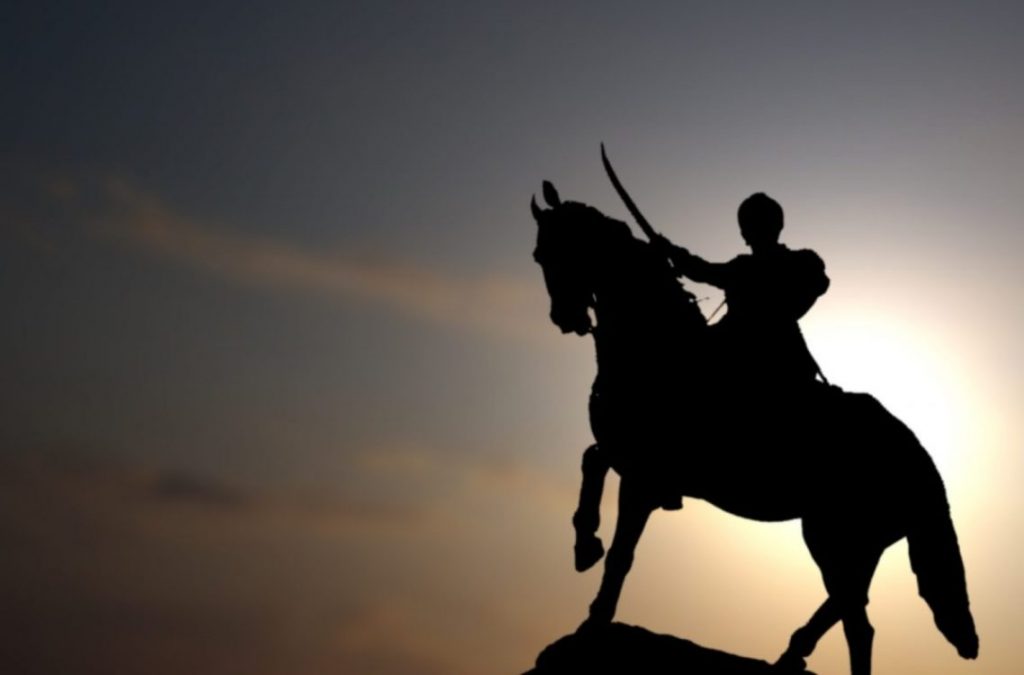Dr Santosh Kumar Mohapatra
The Maratha invasions were a series of conquests in the Indian subcontinent which led to the formation of the Maratha Empire. These conquests were started by Shivaji Bhosale on 10 November 1659 and had his first victory at the Battle of Pratapgad against the Adilshahi forces of Bijapur. The empire formally came into being from 1674 with the coronation of Shivaji as the Chhatrapati.
The expansion of the Maratha Empire was limited and interrupted by the Mughal conquests of south India by Emperor Aurangzeb. However, after the death of Aurangzeb in 1707, Marathas revived their strength and reversed the territorial loss they had suffered in Deccan wars. Thereafter, they started spreading their suzerainty and conquered different provinces/regions through war.
With the passage of times, the Maratha Empire consisted of a confederacy of five major chiefs: the Peshwa (Prime Minister) at the capital city of Poona, Gaekwad as chief of Baroda, the Scindia in Gwalior, Holkar as chief of Indore, and Bhonsale in Nagpur.
Odisha had been under the rule of the virtually independent Nawabs of Bengal in 1707 following the death of Aurangzeb. Marathas had a penchant for guerilla warfare and taste for plunder. After establishing their control in excess of central India, the Marathas were trying to extend their control to more areas. They were forcefully collecting Chauth (an annual tax nominally levied at 25 per cent on revenue or produce) from the neighbouring states.
Goaded by the dream of a Maratha Empire and the desire for wealth, the Marathas led by Raghuji Bhonsale of Nagpur invaded Bengal six times between 1741 and 1751. Bengal, Bihar, and Odisha were subjected to predatory incursions, much to the embarrassment of the provincial government and causing hardships to the local people. These incursions resulted in heavy civilian casualties and widespread economic losses.
Alivardi Khan, the then Nawab of Bengal, had to face formidable threat not only from the Marathas but also from rebel Afghan troops. The wars that Alivardi had to fight against the Marathas and the Afghans put a severe strain on the finances of the government. In June 1751, owing to old age and ill-health, Alivardi Khan ceded Odisha to the Marathas for respite from warfare and incursion.
The terms of the treaty were: First, the Nawab will pay the Chauth regularly to Raghuji Bhonsale for the three provinces of Bengal, Bihar, and Odisha. Second, Nawab will appoint the nominee of Bhonsale, Mir Habib, as the Naib Nazim of Odisha but the entire revenue of that province will be paid to Bhonsale. As high as 12 lakh rupees were to be paid annually to Raghuji on condition the Marathas would not set their foot within the dominions of Alivardi. Thus, Odisha became a province under the Marathas in 1751. The province that was ceded to the Marathas extended from River Sonamukhi (Suvarnarekha) in the north to the Chilika Lake in the south.
Odisha was sandwiched between the already occupied British territories of Bengal and Madras Presidencies. The Bhonsle chief of Nagpur thought it prudent not to have a clash with the British power. Accordingly, he extracted Chauth, huge money and loans from the British for allowing passage of the British troops through Odisha.
Sadashiv Rao, the last Maratha governor who was Naib Subahdar of Odisha, courted the British instead of confronting them. With the abolition of the British Residency at Balasore, Barabati slipped away from the clutches of the British East India Company.
In 1761, the Maratha Army lost the “Third Battle of Panipat” against Ahmad Shah Abdali of the Afghan Durrani Empire. This marked the beginning of the end of the Maratha supremacy in India.
On 17 December 1803, Raghoji II Bhonsale of Nagpur signed the Treaty of Deogaon (in Odisha) with the British after the Battle of Argaon and gave up the province of Cuttack (which included the Mughal and the coastal part of Odisha, Garjat/the princely states of Odisha, Balasore Port, and parts of Midnapore district of West Bengal).
The Martha Empire collapsed in 1818 with the defeat of Peshwa Bajirao II at the hands of the East India Company in the third Anglo-Maratha War. The reason for the defeat was that the Maratha chiefs were not united and were engaged in internal squabbles.
(Concluded)
The writer is an Odisha-based columnist.
